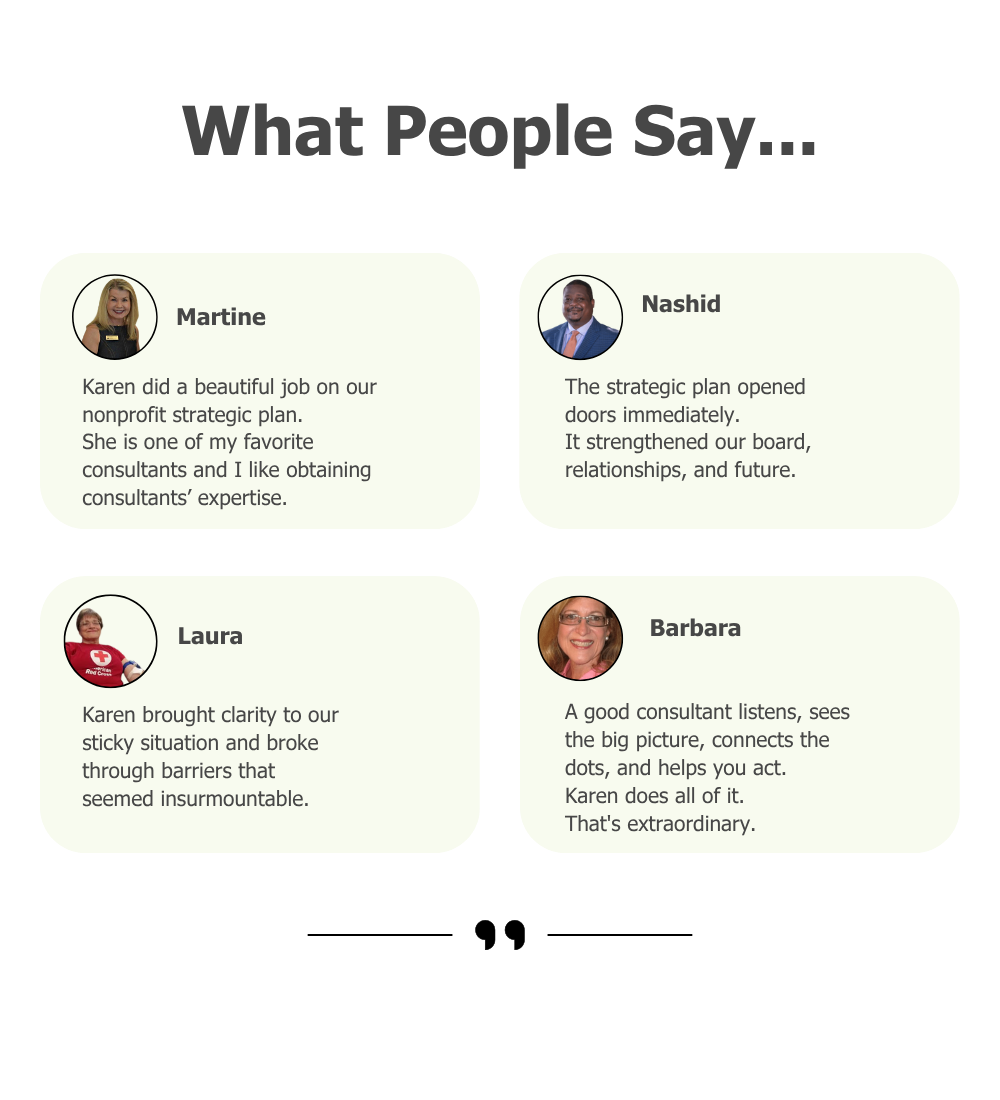Karen Eber Davis
Strategic Planning Consultant
Serving Raleigh, the Triangle, and Beyond
I’m a nonprofit strategic planning consultant serving Raleigh and the Triangle, based in Durham.I partner with nonprofit CEOs and boards across North Carolina—and the country—who are ready to move their mission forward but need a clear, customized strategy to get there.Whether you’re building your first strategic plan or refreshing one, I help you move from uncertainty to clarity with expert facilitation, honest guidance, and actionable support.If you’ve been searching for “nonprofit strategic planning consultants near me”— you’re in the right place.


Strategic Planning Services Built Around You
Looking for a Nonprofit Strategic Planning Consultant Near You?Whether you’re building your first strategic plan or refreshing an outdated one, I offer tailored strategy solutions and leadership support to help you move forward with clarity and confidence.Why Work With a Local Consultant?Working with a nonprofit strategic planning consultant in North Carolina means you get:
• A partner who understands the regional nonprofit landscape
• In-person or hybrid “Big Think” sessions
• Fast response times when timing matters most
• Someone who knows the local funding ecosystem—and how to position your organization for success
Approach
I don’t believe in cookie-cutter strategic or other plans. Every organization is different. Your plan should reflect you--your mission, strengths, and wisdom. I help you:
Clarify your vision so your board and team row in the same direction
Spot hidden opportunities, even when the path forward seems blocked
Build a step-by-step roadmap that’s realistic, energizing, and easy to follow
If needed, navigate change with strategic coaching
Whether you need a full strategic plan, a targeted assessment, or leadership coaching to build your capacity—I’m here to help.

Let's Chart the Course Together
You don’t have to figure it out alone. With the right plan—and a coaching partner by your side—your nonprofit can move from stuck to strong, starting now.Local to the Triangle area? Let’s meet in person.Not nearby? I offer virtual strategy sessions for leaders across North Carolina and beyond.Let’s build a roadmap that works. Schedule a free consultation →
Or reach out via→
📧 Email: [email protected]🔗 LinkedInNeed practical strategy tips? Check out my LinkedIn newsletter for ideas, encouragement, and tools to lead well.